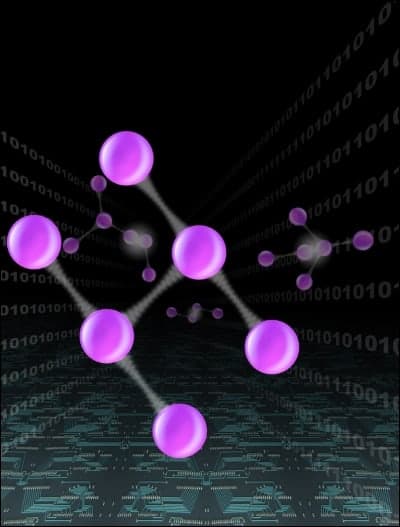Physicists in China, Austria and Germany claim to have created the largest ever photonic "Schroedinger cat", a popularized term given to entangled particles that are in a superposition of two quantum states. The physicists also claim their apparatus can create a six-photon "cluster" state, which could bring the physical realization of a quantum computer one step closer (Nature Physics doi:10.1038/nphys507).

Mixing particles so that the measurement of one affects the state of another, otherwise known as “entanglement”, plays a crucial role in quantum information processing. Recently, physicists realized that entanglement could be conveniently related to an underlying graph, by creating a new type of state called a “graph state”. But while these special states have already provided fresh insights into phenomena such as non-locality and decoherence, further progress in the world of quantum computing relies on the generation of more numerous entangled states.
Now Chao-Yang Lu and colleagues from the University of Science and Technology of China and institutions in Austria and Germany have managed to create two types of six-photon graph state: a “Schroedinger cat” state, and a “cluster” state. Both of these break records for the number of photons entangled in such a manner: the cat state was previously five photons, and the cluster state was previously four.
The physicists began by using an intense ultraviolet laser to pump photons into a crystal. Every so often, one of the photons decayed spontaneously into two entangled photons. They then combined photons from three of these entangled pairs using beam splitters, resulting in six photons that could all be either vertically or horizontally polarized. These two states, according to Lu and colleagues, were analogous to the “dead” and “alive” states of Schroedinger’s cat – a legendary paradox thought up by Erwin Schroedinger to highlight the absurdity of quantum mechanics.
However, Lu says that the six-photon cluster state, which his apparatus can produce when a plate is inserted to transform the polarization of one of the photons, is likely to be of more importance.
“Standard quantum computation is based on sequences of unitary quantum logic gates, where a major difficulty lies in the implementation of dynamical operation,” he said. “Cluster-state quantum computation does not need any dynamical operation.”



